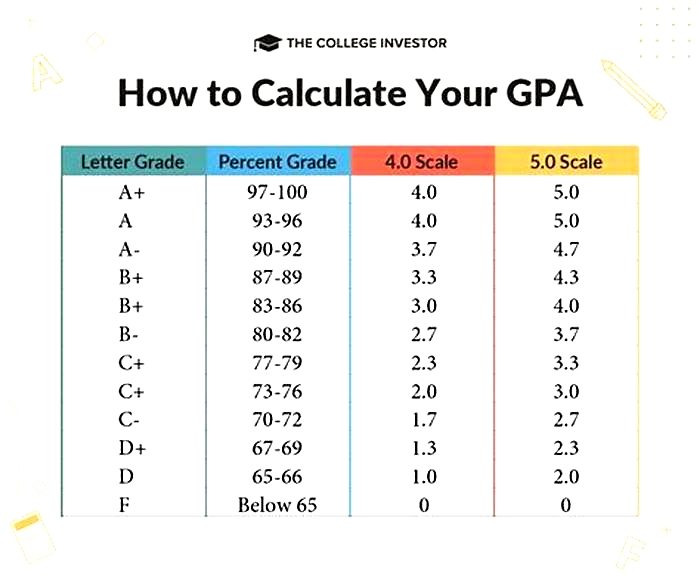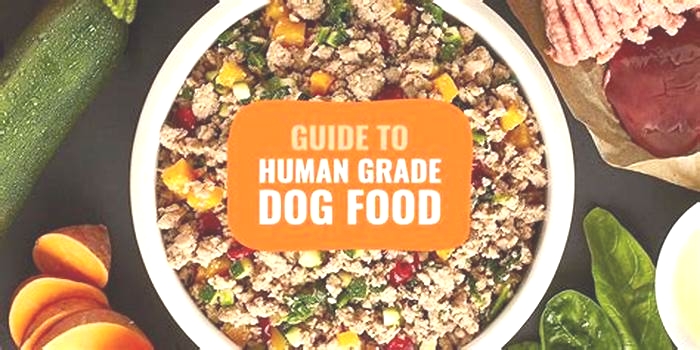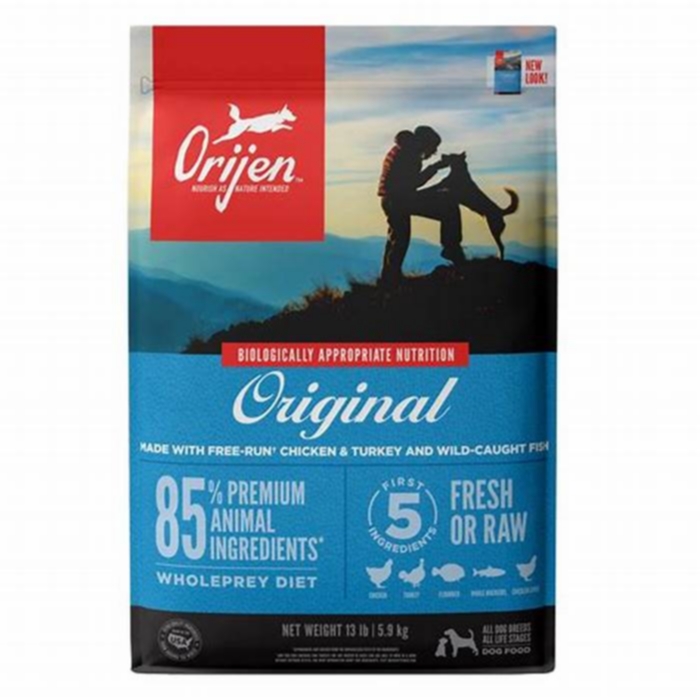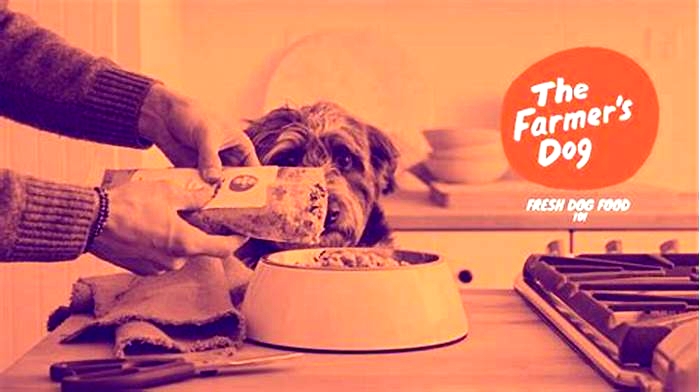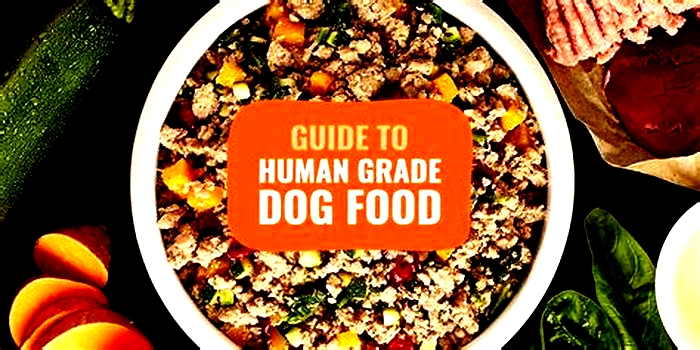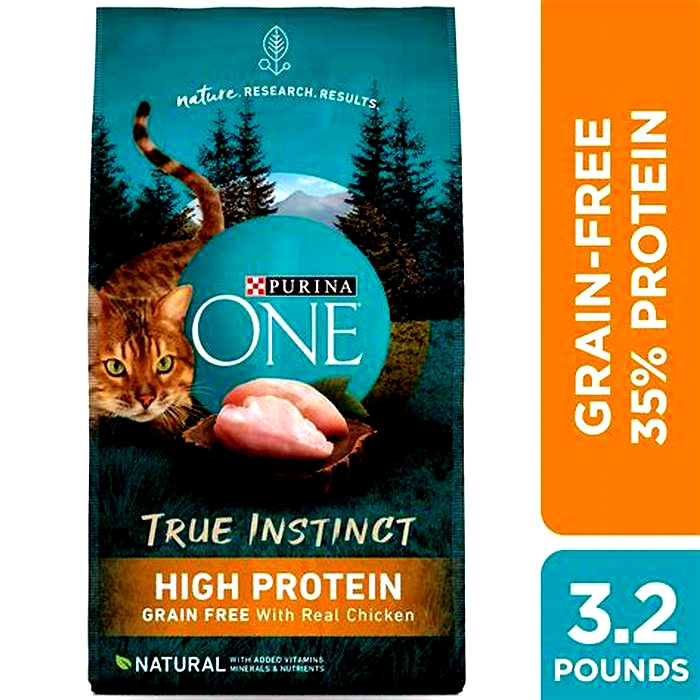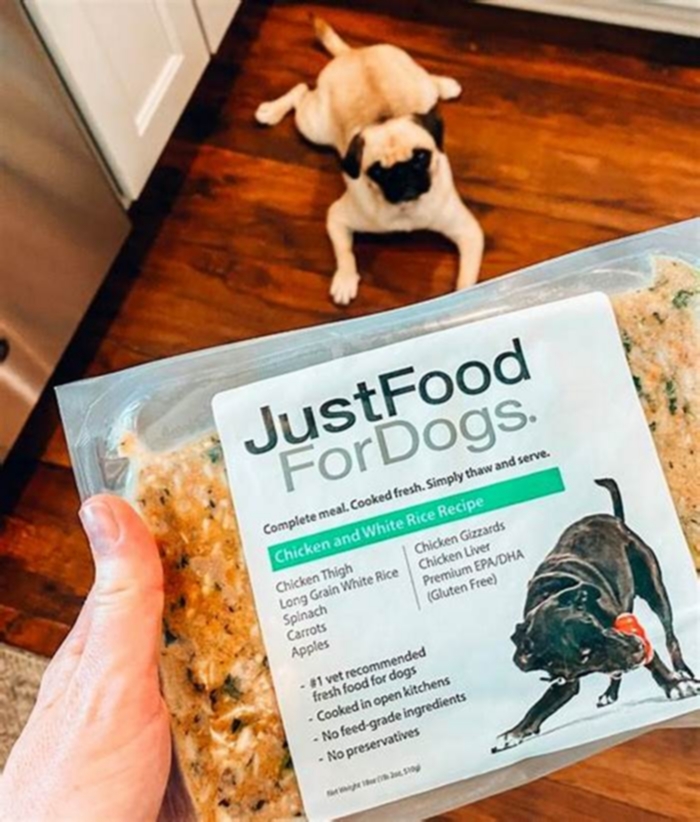What is human grade feed grade
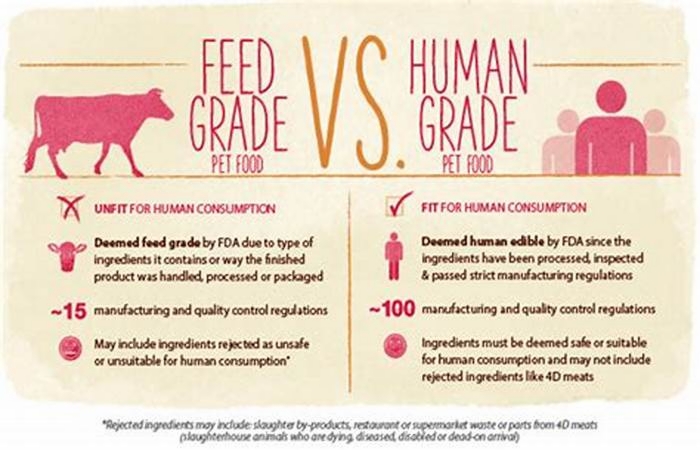
You love your dog. Of course you want to provide your canine companion with the very best of everything including meeting mealtime needs with healthy dog food options.
To do that, you need to know what healthy dog food options really are. The question might seem confusing but lets keep it simple.
Are dogs that eat human-grade dog food healthier? The simple answer is that the most beneficial food for your dog is one that is crafted from fresh, whole foods. If it is human-grade dog food, all the better.
In case youre still confused, lets look closer.
What do you mean by whole foods?
When we talk about whole foods, we mean foods that are minimally processed and as close to their natural state as possible.
For a dog, a whole foods diet can include vegetables and grains, but the majority of protein should come from minimally processed meat. Meat is the key protein source for your dog, because dogs need taurine which is only found in meat protein.
Most dog foods are not great examples of whole foods. Thats because the majority of dry and canned foods are highly processed. Processed foods offer less nutrition, lower quality ingredients, and are harder on your dogs digestive system.
Yes, there may be meat in dry dog food but factory processing strips away the natural taurine found in any meat ingredients and adds tons of carbs and starches.
Yes, canned dog food has meat ingredients, but much of the protein content comes from animal by-products, as well as unhealthy artificial gums and thickeners to give it that jelly texture.
What does human-grade dog food mean?
It may be surprising, but not all dog food is human grade. In the past, most dog foods were feed-grade, not human-grade. Feed-grade dog food does not have to be edible for humans, and cannot be legally sold as human food because they are legally allowed to contain ingredients proven harmful to humans.
Human-grade dog food means just what it sounds like it does. Its dog food made with ingredients that are safe for you to eat. Human-grade dog foods are attuned to doggy tastes so its not that you would eat it. But the key is that you could safely do so.
Human-grade dog foods must be suitable and safe for human consumption AND be manufactured in a USDA inspected facility that produces only human grade food, using processes deemed safe for human-grade food.
Keep this in mind: If a food is not made of 100% human-grade ingredients, and manufactured and handled up to human-grade standards, the seller CANNOT say that their dog food is all human-grade on the package.
What if a dog food says it uses human grade ingredients?
As dog owners began to demand healthier food for their dogs, some brands tried to get in on the trend by claiming human-grade ingredients on their website or marketing materials. This is deceptive. A food is only 100% human-grade if the claim is printed on the packaging. If the claim is on the packaging that means the government has received documentation from the brand proving 100% human-grade ingredients are used and the food is made in a USDA inspected facility. Keep this in mind:
- If a dog food brand combines feed grade ingredients with some human grade ones, do you have a human grade dog food? Nope.
- What if they use human grade ingredients, but make their food at a feed-grade facility, or with feed-grade handling? Nope again.
Human-grade ingredients are not enough. Just because a dog food recipe uses one or two ingredients that are human-grade, that does NOT mean the finished dog food is safe for human consumption.
If a dog food doesnt have a completely human-grade recipe and process, its not a human-grade dog-food. According to The Pet Food Industry, the use of the term human grade applies to the product as a whole.
Every ingredient must be human-grade, and finished food must be stored, handled, processed and transported in a manner that is consistent with current good manufacturing processes (cGMPs).
Are dogs that eat human-grade dog food healthier?
The differences between human-grade dog foods and feed-grade dog foods are staggering if the health and safety of your pet are important to you.
Human-grade dog food is safer than feed-grade dog food because feed-grade foods are legally allowed to include contaminants. Not only can feed-grade dog foods contain ingredients that humans wouldnt want to eat, they are legally allowed to include ingredients that are unsafe. Consider these 4 examples:
- Vegetables that have been overexposed to pesticides.
- Sick animals that have been over exposed to drugs.
- Contaminated, expired, or meats from unidentified animals.
- Meat by-products including organs, blood, fat, tendons, and bone.
If ingredients like these are unsafe for humans to eat, they are not likely safe for human companions to eat, either.
Does dog food have to be edible for humans? No. But human-grade dog food which is formulated especially to appeal to dog tastes is a healthier choice for the dogs we love.
Wait what grade of meat is used in feed-grade dog foods?
Talk about mystery meat. When it comes to feed-grade foods, the question isnt so much what grade of meat is in the dog food, but what meats and other things that ARENT meat are in there?
Feed-grade dog food may include animal organs, blood, fat, tendons, and bones. They can also include tissues and by-products from mammals other than cattle, pigs, sheep or goats, without further description.
Feed-grade dog foods are made of rendered meat. This process can allow dog food manufacturers to use animal byproducts and even include sick animals deemed unfit for human consumption.
First, animal tissues are placed in a huge grinder that blends it all together. Then, rendering reduces meat tissues and by-products into a gray, fatty meat mass which is heated for hours until grease and fat float along the top of the concoction.
Eventually, this sludge is dried into a powder known as meat meal which is used to make feed-grade pet food.
Why isn't all dog food human grade?
Good question. The answer comes down to cutting costs by cutting corners. Human-grade dog foods may cost more, but they also deliver more meat-forward nutrition. Consider these cost-cutters used in feed-grade food that may be health cutters as well:
Byproducts. One way that pet food companies cut corners and cost is including by-products in their food. By-products are the castoffs other than meat that reduce production costs while maintaining protein.
By-products are the spleen, kidneys, fatty tissue, the brain, blood, bone, undeveloped eggs, stomach, and intestines are all items that could be included in feed-grade dog food. Keep in mind: by-products can include road kill, expired meat, and diseased animals.
Fillers. And thats not all. Another way to cut cost and increase profit margins is the addition of fillers to your pet food. Fillers offer very little nutritional value but are relied upon to make the expensive components of the product stretch further.
Fillers can include corn, wheat and rice bran, oat and soybean hulls. Your average kibble recipe can be between 40 to 70% carbohydrates due to all of these fillers. Healthy, fresh dog food should never include unnecessary fillers.
Splitting. The last way feed-grade foods can cut corners is called splitting a way of spinning the ingredients list to make a food look healthier than it is.
This deceptive strategy leverages the fact that dog food ingredients are listed in order of weight. When you split ingredients into components, it reduces the weight, and can push a healthier ingredient higher on the list.
A dog food may list meat broth as the first ingredient followed by corn gluten meal, lamb, and then animal fat preserved with ground yellow corn.
The dog food brand has split the corn-based ingredients in two, making it look as though lamb is a larger part of the recipe than it is. Dont fall for it this is a corn-based product.
How am I to find out if a dog food brand is human grade?
You can easily find out what dog foods are human grade by looking at the claims on the packaging. If it doesnt say human-grade food on the packaging, its not human-grade food. If its not on the packaging, but only on the brands website, be cautious about believing the claim.
Do your research, and examine claims with an informed eye. Choose a food that is marked as all human-grade dog food, NOT human-grade ingredients just including human-grade ingredients is not enough to be considered a human-grade dog food. Check to see if the food is created in a human-grade facility as well.
When it comes to determining what grade of meat is in the dog food, look for the species of meat and the cuts used to create the dog food. You want to see specific cuts, not meat meal or by-products. Analyze the ingredients list, watching out for splitting strategies, fillers, or by-products.
If youre trying to decide how to make a healthy human-grade diet for your dogs, A Pup Above is a clean-recipe, meat-forward dog food choice that makes good nutrition simple. A Pup Above is so clear about what meat it uses and where it comes from, you can actually trace each ingredient back to the farm.
Do dogs really need human grade food?
Dogs are evolved from wolves. One theory as to why dogs have been so successful is their digestive flexibility. Your dog can survive on feed-grade food. But surviving isnt the question. When it comes to health, feeding your dog feed-grade food means choosing a type of food that is legally permitted to include contaminants including pesticides, chemicals, drugs, and unhealthy meats and by-products
We began this entire conversation because you love your dog, and you want whats best for your best friend. Feed-grade food isnt the best, and some feed-grade brands engage in deceptions that make you think youre getting more for your money than you are.
So, are dogs that eat human-grade dog food healthier? When it comes down to it, the decision to feed your dog human-grade dog food up to you. You can certainly feed your dog the way you wish but offering a whole foods diet is one way to help keep your pet healthy and happy for as long as possible.
Human Grade: Should pets eat the same food that we do?
Many pet owners want to feed their pets the same kinds of foods that they feed their human family. This interest has led to the marketing of so-called human grade pet foods. This term can be a bit misleading it is not always used appropriately and doesnt mean that a specific food is necessarily any safer or healthier for pets.
The term human grade itself is only used for pet foods foods intended to be eaten by people are simply referred to as edible by the US Department of Agriculture (USDA), which is the agency responsible for inspecting our food. To be considered edible, foods must stay in the human food chain and follow specific guidelines that are put in place by the US Food and Drug Administration (FDA).
Until just a few years ago, there was no legal definition of human grade as it related to pet food and questionable uses of the term were quite common. However, it is now defined by the Association of American Feed Control Officials (AAFCO) as a product where every ingredient and the resulting products are stored, handled, processed, and transported in a manner that is consistent and compliant with regulationsfor human edible foods. This means that the foods have to be made in plants or kitchens that are licensed to produce human foods and otherwise treated exactly like human foods.
While the standards for human foods are different in some ways than for pet foods, this doesnt mean that human grade foods will have health benefits for your pets or that the ingredients in these foods are necessarily better. For example, chicken for most pet food comes from the same bird that the chicken in the grocery store comes from the breasts, thighs, and wings go to grocery stores while the rest of the chicken (neck, back, organs) goes into pet food. Even though it all comes from the same chicken, once it is purchased by a pet food manufacturer to be taken to a pet food factory then it is no longer considered edible for people, regardless of the initial quality. For plant-based ingredients, there may be even less difference the same exact corn going into many [not human grade] pet foods is also going into the tortilla chips in your kitchen. Therefore, the term human grade doesnt necessarily have anything to do with the quality of the ingredient.
The designation of human grade also is unrelated to whether the food has appropriate levels of nutrients AAFCO has the same standards for nutrients for all pet foods. So, a human grade food may not be any different in actual nutrients than a traditional pet food and even the ingredients may not be all that different. The biggest difference may be being made at a pet food plant versus in a human food facility. But even this doesnt necessarily mean the human grade diet is better there are pet food plants with very high standards and human food facilities that barely meet minimum regulations.
Of course, an alternative to feeding human grade pet food is to cook for your pet using human foods. If you are interested in cooking for your pet, we recommend you check out our other posts on home-cooking.
The bottom line is that purchasing human grade pet food does not ensure healthier or better quality food for your pet. It is better to focus on criteria that more objectively identify pet foods with high quality ingredients and excellent quality control standards and made by companies with significant nutritional expertise. These are the real factors that that will help to keep your pet healthy.

Dr. Cailin Heinze is a Board-certified Veterinary Nutritionist and the Executive Director and Chief Academic Officer of the Mark Morris Institute, a non-profit organization whose mission is to promote optimal companion animal health by providing educational opportunities for veterinary students and veterinarians in clinical nutrition. She has also done some consulting work for Balance IT, a company that makes software and supplements for home-cooked pet diets. She is an expert in home-cooked diet formulation and general pet nutrition and has a special interest in feeding pets with kidney disease and cancer.
Want to read more information on feeding your pet?
Subscribe to always know when we add new material!
Recommended Posts

January 18, 2024

December 08, 2023
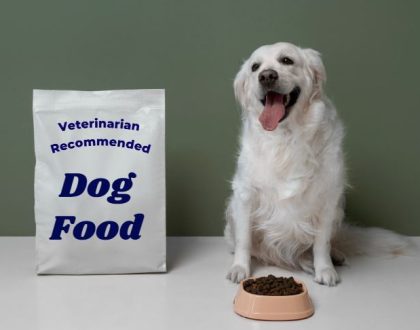
November 05, 2023

